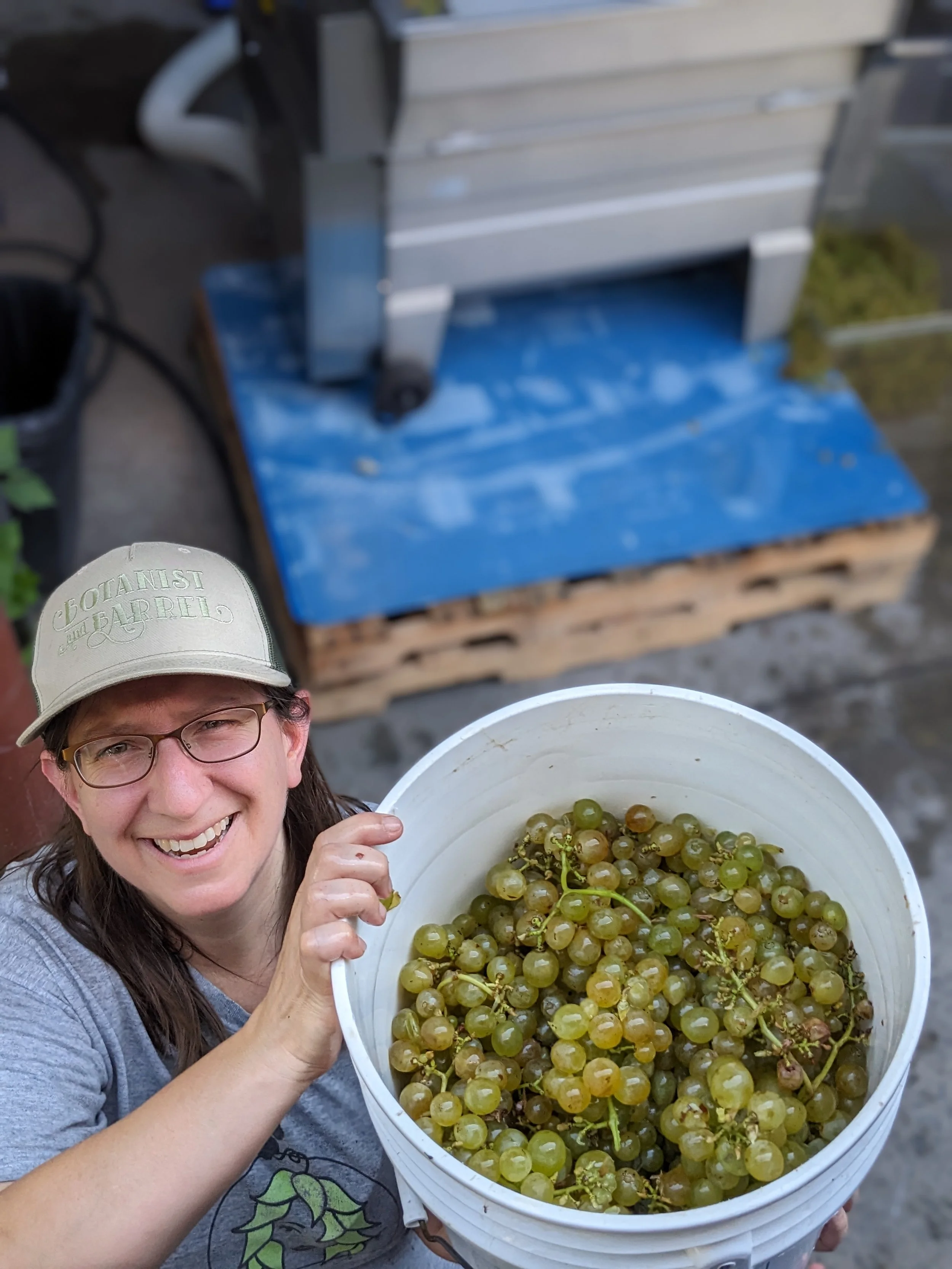UNFAMILIAR FLAVORS
Hybrid grape varieties: Offspring of deliberate crossings between Vitis vinifera and other species, challenge the status quo of what defines traditional wine, encouraging oenophiles to expand their vinous horizons.
Hybrid grape varieties, like Blanc du Bois, Vidal Blanc, Traminette, and Chambourcin possess a distinctiveness that adds depth and variety to the wine landscape. This offers winemakers, like us, a canvas to experiment, craft, and innovate.
While some may view these hybrids with skepticism due to their unfamiliarity, they embody a narrative of resilience and adaptability. These qualities are the ones that the world now demands of us as growers. These grapes thrive in diverse climates, demonstrating hardiness against various diseases, and allow for an eco-friendly approach to viticulture. These varieties are not solely dependent upon herbicides and pesticides to stay healthy and productive. This allows us to stay more closely aligned with our never and no-spray apple-growing practices.
We look at their obscurity as an opportunity to spark intrigue. These enigmatic grapes often present unexpected yet delightful flavor profiles, leaving an indelible mark on the senses. I’d encourage you to give them a try, after all they will be the new normal soon enough.
Check out this list of some of my favorite unfamiliar flavors from around the world and their places of origin along with specific dishes:
**Durian** - Southeast Asia (especially Thailand and Malaysia): Known for its strong smell and unique taste, it's often used in various desserts despite being quite polarizing due to its odor. Watch Lyndon eat it for the first time:
**Ajwain** - India: Seeds with a thyme-like flavor used in Indian cuisine, especially in bread, curries, and lentil dishes.
**Nopal** - Mexico: Edible cactus with a tangy, slightly tart taste used in salads, soups, and tacos.
**Borage** - Mediterranean region: An herb with a cucumber-like taste used in salads, soups, and garnishes.
**Finger Lime** - Australia: Citrus caviar with tangy, zesty pearls used in seafood, desserts, and cocktails.
**Salak (Snake Fruit)** - Indonesia: A fruit with a sweet and sour taste, resembling apple and pineapple, commonly eaten fresh or used in jams and desserts.
**Tamarind Paste** - Southeast Asia: A tangy, sweet-sour paste used in sauces, curries, and chutneys.
**Rambutan** - Southeast Asia: A tropical fruit with a sweet, juicy flavor similar to lychee, often eaten fresh or used in desserts.
**Soursop (Graviola)** - Tropical regions: A fruit with a creamy, tart flavor used in beverages, smoothies, and desserts.
**Wattleseed** - Australia: Seeds with a coffee, chocolate, and hazelnut flavor used in bread, sauces, and desserts.
**Lucuma** - South America: A fruit with a sweet, maple-like flavor used in desserts, ice creams, and smoothies.
**Yerba Mate** - South America: A herbal tea with a slightly bitter, earthy flavor, commonly consumed as a beverage.
**Fennel Pollen** - Mediterranean regions: Highly aromatic pollen with a sweet, licorice-like taste used as a spice in various dishes.
**Huitlacoche (Corn Smut)** - Mexico: A fungus with an earthy, mushroom-like flavor used in tacos, quesadillas, and soups.
**Pandan** - Southeast Asia (Malaysia, Indonesia, Thailand): A fragrant, sweet flavor used in desserts, drinks, and savory dishes.
**Yuzu** - Japan: A citrus fruit with a unique, tart flavor used in sauces, dressings, and beverages.
**Shiso** - Japan: An herb from the mint family with a distinct, slightly spicy, and citrusy flavor. It's used in salads, sushi, and garnishes
**Kokum** - India: A souring agent with a tangy, fruity flavor used in Indian curries and beverages.
**Galangal** - Southeast Asia: A root similar to ginger but with a sharper, citrusy flavor. It's used in soups, curries, and stir-fries.
**Tamarillo** - South America/New Zealand: A fruit with a tangy, slightly sweet taste, used in chutneys, sauces, and jams.
**Gochujang** - Korea: A fermented chili paste with a sweet, spicy, and savory flavor used in various Korean dishes.
**Black Sesame** - Middle East/Asia: These seeds offer a nutty, slightly bitter taste used in sweets, desserts, and savory dishes.
**Kaffir Lime Leaves** - Southeast Asia: Leaves with a strong, citrusy flavor used in Thai and other Southeast Asian cuisines.
**Papalo** - Mexico/South America: An herb with a flavor reminiscent of cilantro and arugula, used in salsas and salads.
**Nigella Seeds** - Middle East/India: Small black seeds with a nutty, peppery taste used in bread, spice blends, and curries.
**Rambutan** - Southeast Asia: A tropical fruit with a sweet, grape-like flavor.
**Lingonberry** - Northern Europe: Tart berries used in jams, sauces, and desserts.


